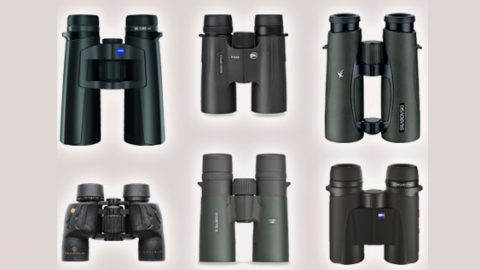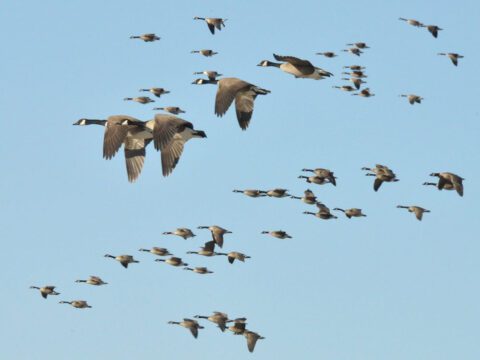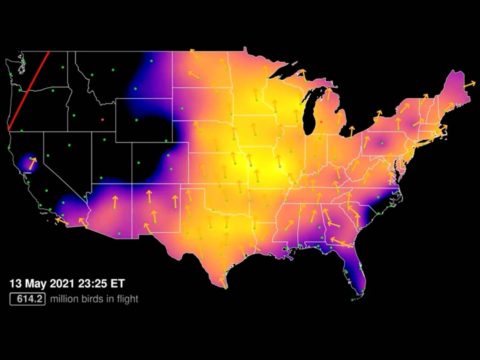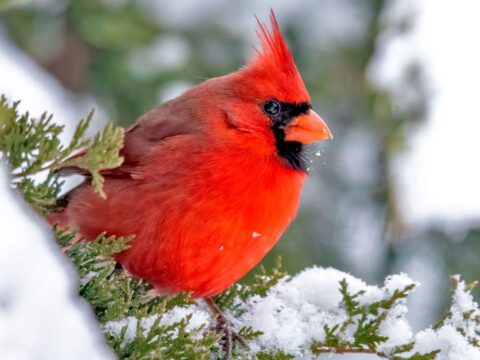Food vs. Safety: Risk Management for Chickadees
By Gustave Axelson
October 15, 2013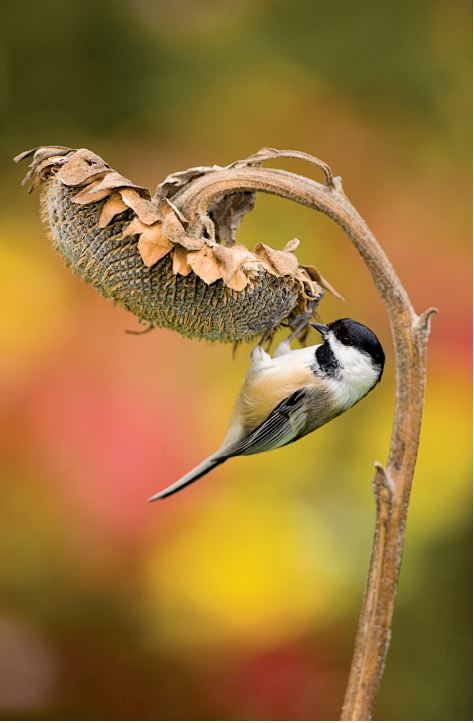
A Cornell Lab study investigates the survival strategies of feeder birds in winter.
What weighs more heavily on the mind of a Black-capped Chickadee that regularly patronizes a backyard bird feeder in February—the possibility of starving to death on a cold winter’s night, or the chance it might get eaten by a hawk while snatching some birdseed?
That’s a question Cornell Lab of Ornithology scientists David Bonter, Ben Zuckerberg, and Wes Hochachka had as they designed a research study to analyze the visitation patterns of backyard birds to feeders. Risk management may be a hot topic in business books these days, but it’s also something Black-capped Chickadees engage in as they try to stay alive.
“If you eat too much seed early in the day and get fat, your takeoff angles and flight speeds are lower, and you run a greater risk of getting eaten by predators,” said Bonter. “But in winter, birds need to eat enough during daylight to get through 14 to 16 hours of darkness and cold temperatures. So they’ve got to make a trade-off between starvation versus predation risk.”
To look deeper at that trade-off, Bonter, his partners, and a staff of several Cornell undergraduate students tallied the comings and goings of feeder birds. Bonter and his crew set up smart feeders near the Cornell Lab’s headquarters in Ithaca, New York, that were rigged with radio frequency identification (RFID) technology. They also captured and outfitted four species of birds (Black-capped Chickadees, Tufted Titmice, White-breasted Nuthatches, and House Finches) with little RFID tags so the smart feeders would automatically record every bird’s visit (in much the same way that some credit cards offer tap-and-go payment with RFID tags). During two winters, from 2009 to 2011, Bonter recorded 472,368 feeder visits by 94 tagged birds.
Poring over the data, Bonter noticed one thing immediately—chickadees are busy birds. Individual chickadees were taking as many as 50 sunflower seeds a day in December; that’s like an average person eating 100 pounds of hamburgers in a day (or in the case of caching chickadees, stockpiling some of them to eat later in winter).
Plotting feeder-visitation data over daily timelines, patterns of visitation emerged. All four species began hitting the feeders about half an hour before sunrise and continued to visit with increasing frequency as each hour passed, peaking at about two hours before sunset. After that, feeder visitation declined sharply for three species (White-breasted Nuthatches continued until sunset).
These findings ran counter to the long-standing theory among ornithologists that birds feed primarily in the early morning to recover from the long winter night and in the late afternoon to prepare for darkness, feeding less frequently during midday to avoid falling victim to predators. Instead, the birds in Bonter’s study fed continuously from first light to a point in midafternoon, after which their visits tailed off abruptly.
“That’s a thing I still can’t wrap my head around,” he said. “In the early part of the day, it’s like the birds are reasoning, ‘Who cares how risky it is to forage during the day, because if I don’t eat I’m dead anyway.’ But then why knock off and go to bed early with a few hours of daylight left?
“They’re either eating until they hit a satiation point, or they’re stopping before dusk to avoid predation by nocturnal predators, which they perceive to be a greater risk.”
In other words, feeding while the hawks are out may be a risk that chickadees, titmice, and finches are willing to run, but eating when the screech-owls roam is a different story. Bonter’s anecdotal experience with screech-owls may back up that theory. In other ornithological fieldwork, he has found large piles of songbirds stashed away in the nest boxes of Eastern Screech-Owls.
As for the potential broader impact of his study, Bonter says it may be one of the first steps toward making backyard feeders more attuned to the needs of birds.
“We, as a society, spend millions of dollars a year on birdseed. We’re conducting an enormous continent-scale experiment on providing supplemental food to birds, and we’re not paying any attention to the results,” he said. “This study is a step toward examining how birdseed affects survival and social behaviors. Our next goal is to better understand the annual foraging patterns of wild birds, and how they use feeders. We may be able to tell people with backyard feeders how they can best improve the survival of the birds they feed.”

All About Birds
is a free resource
Available for everyone,
funded by donors like you
American Kestrel by Blair Dudeck / Macaulay Library
